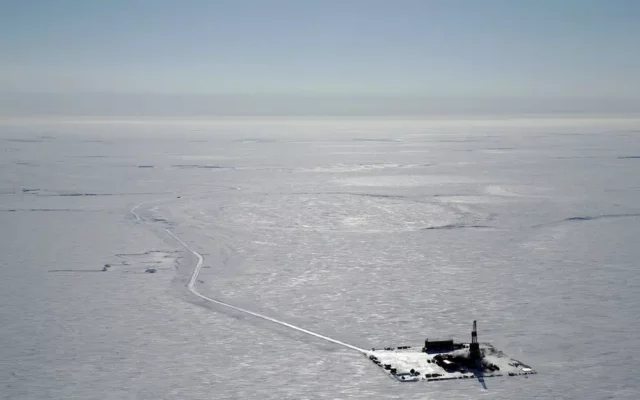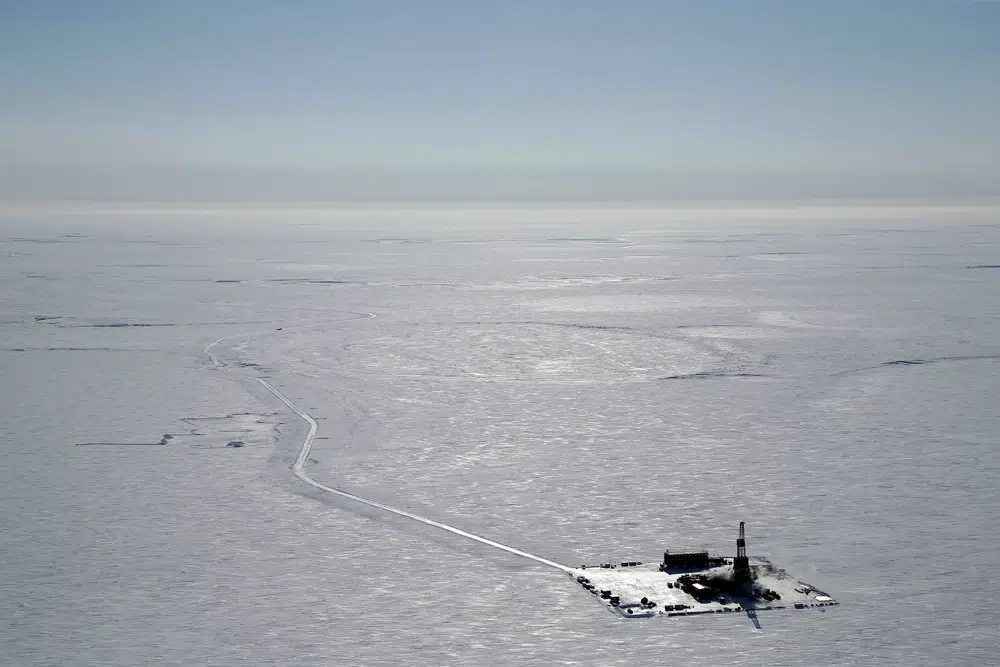TikTok push targets Biden on Alaska’s huge Willow oil plan


ANCHORAGE, Alaska (AP) — A social media campaign urging President Joe Biden to reject an oil development project on Alaska’s remote North Slope has rapidly gained steam on TikTok and other platforms, reflecting the unease many young Americans feel about climate change.
The #StopWillow campaign has garnered more than 50 million views and counting, and it was trending in the top 10 topics on TikTok, as users voiced their concerns that Biden wouldn’t stick to his campaign promises to curtail oil drilling.
“It’s just so blatantly bad for the planet,” said Hazel Thayer, a climate activist who posted TikTok videos using the #StopWillow hashtag.
“With all of the progress that the U.S. government has made on climate change, it now feels like they’re turning their backs by allowing Willow to go through,” Thayer said. “I think a lot of young people are feeling a little bit betrayed by that.”
At the same time, Alaska Native leaders with ties to the petroleum-rich North Slope support ConocoPhillips Alaska’s proposed Willow project. They have pushed back, saying the Willow Project would bring much-needed jobs and billions of dollars in taxes and mitigation funds to the vast, snow- and ice-covered region nearly 600 miles (965 kilometers) from Anchorage.
The Alaska Native mayors of two North Slope communities — Asisaun Toovak, of Utqiaġvik, the nation’s northernmost community formerly known as Barrow, and Chester Ekak, of Wainwright, about 90 miles (144 kilometers) to the southwest — penned an opinion piece for the Anchorage Daily News in support of the project.
In the debate, “the voices of the people whose ancestral homeland is most impacted have largely been ignored,” they wrote. “We know our lands and our communities better than anyone, and we know that resource development and our subsistence way of life are not mutually exclusive.”
Biden’s decision on Willow will be one of his most consequential climate decisions.
Interior Secretary Deb Haaland, who fought the Willow project as a member of Congress, has the final decision on whether to approve it, although top White House climate officials are likely to be involved, with input from Biden himself. The White House declined to comment Tuesday.
Climate activists are outraged that Biden appears open to the project, which they call a “carbon bomb,” and would risk alienating young voters who have urged stronger climate action by the White House as he approaches a 2024 reelection campaign.
Willow’s critics include the Pueblo Action Alliance, which is where Halaand’s daughter, Somah Haaland, has worked. The Western Energy Alliance, an oil industry trade organization, claims that creates a conflict of interest for the secretary. Interior spokesperson Melissa Schwartz denied any conflict.
Alaska’s congressional delegation — including Democratic Rep. Mary Peltola, who is the first Alaska Native to serve in Congress — backs the project and met with top officials at the White House last week.
With a decision anticipated soon, attention to Willow is growing online.
The project’s nature-themed name is making it easier for the topic to gain traction on social media than other oil projects with more technical-sounding names, said Cassidy DiPaola, spokesperson for People Vs. Fossil Fuels, a coalition of groups pressing Biden for an end to fossil fuel projects. A petition on change.org had more than 3 million signatures by Wednesday, making it the third most-signed petition in the company’s history, it said.
“Young voters felt like this was betraying the climate goals they had set forth,” said Tyler Steinhardt, a vice president at Pique Action, a company that produces social media and mini-documentaries about climate solutions.
The proposed Willow project is within the National Petroleum Reserve-Alaska, an area the size of Indiana, though about half of the reserve is off limits to oil and gas leasing under an Obama-era rule reinstated by the Biden administration last year.
It’s also where subsistence hunters harvest caribou, seals, fish and bowhead whales to supplement extremely high food costs in rural Alaska, where for example a 24-ounce bag of shredded cheese can cost $16.99.
ConocoPhillips Alaska said Willow, one of the biggest oil fields to be proposed in Alaska in decades, could produce up to 180,000 barrels of oil a day, or about 1.5% of the total U.S. oil production. It could also help fill the 800-mile (1,287-kilometer) trans-Alaska oil pipeline, which is running at about a fourth of the peak capacity in the 1980s, when more than 2 million barrels a day flowed through the line from the North Slope to Valdez for shipment.
In oil-friendly Alaska, there have been visible shows of support for the project.
The Alaska Legislature unanimously passed a resolution last month in support of the project. Local governments and Alaska Native corporations on the North Slope also back the project. Union leaders — a major Biden constituency — support it.
The Alaska Native mayors said in their opinion piece that the project is expected to generate $1.25 billion in taxes for the North Slope Borough to pay for basic services like education, fire protection and law enforcement. Another $2.5 billion is expected for a grant program that will provide other improvements like a new recreation center for youth and community programs in Wainwright.
“It’s time for Washington, D.C., to listen to the voices of Alaska Native communities on the North Slope and approve Willow without further delay or deferral,” Toovak and Ekak wrote.
Not all elected officials on the North Slope favor the project, however,
Rosemary Ahtuangaruak, the mayor of Nuiqsut, the community that would be closest to the Willow project, said she worried about the effect to her community’s subsistence lifestyle.
“There are many who would like to say everybody in Alaska supports oil and gas development,” she told The Associated Press last month. “Well, for our village, this development is in the wrong area … We oppose it.”


